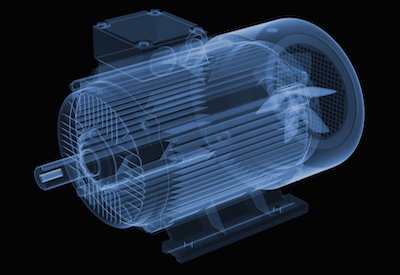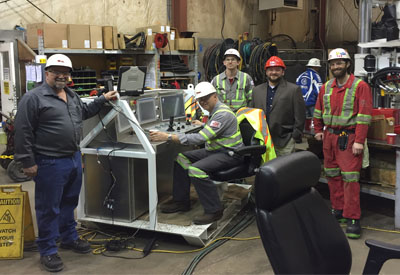Guide to the Canadian Electrical Code, Part I — Instalment 42

Oct 3, 2018
By William (Bill) Burr
The Code is a comprehensive document. Sometimes it can seem quite daunting to quickly find the information you need. This series of articles provides a guide to help users find their way through this critical document. This is not intended to replace the notes in Appendix B or the explanations of individual requirements contained in the CEC Handbook** but will hopefully provide some help in navigating, while reading the code.
The 24th Edition of the CE-C, Part I, (C22.1-18)* is now available from CSA Group. This discussion of Section 78 — Marine Wharves, Docking Facilities, Fixed and Floating Piers, and Boathouses is based on the new edition.
In this article: Section 86 — Electric vehicle charging systems.
Scope: Rule 86-000 notes that this is a supplementary or amendatory section of the code and applies to
• the installation of the insulated conductors and cables and the equipment external to an electric vehicle that connect it to a source of electric current by conductive or inductive means
• equipment and devices related to electric vehicle charging
Appendix B and the CEC Handbook have additional information and descriptions of these installations.
General
Rule 86-100 provides definitions for some special terminology used in this section that are not included in Section 0 — electric vehicle, electrical vehicle connector, electrical vehicle supply equipment (EVSE), and plug-in hybrid electric vehicle (PHEV).
Rule 86-102 notes that voltages of electric vehicle supply equipment must not exceed 750 volts.
Rule 86-104 outlines that rules 86-300 to 86-404 apply to installation of permanently connected and cord-connected electric vehicle supply equipment.
Equipment
Rule 86-200 requires a sign, warning against the operation of the electric vehicle supply equipment without sufficient ventilation, where the manufacturer’s installation instructions require it.
Control and protection
Rule 86-300 specifies that electric vehicle supply equipment be supplied by
• a separate branch circuit that supplies no other loads except associated ventilation equipment, or
• from a branch circuit supplying another load or loads, provided that an electric vehicle energy management system is installed in accordance with Subrules 8-106 (10) or (11), and the calculated demand is determined in accordance with Section 8.
Rule 86-302 notes that the connected load of a circuit supplying electrical vehicle supply equipment and associated ventilation equipment be considered as continuous for purposes of Rule 8-104.
Rule 86-304 requires that each installation of electric vehicle supply equipment rated at 60 A or more, or more than 150 volts-to-ground be provided with a separate disconnecting means
• on the supply side of the point of connection of the electric vehicle supply equipment
• located within sight of and accessible to the electric vehicle supply equipment
• capable of being locked in the open position
Rule 86-306 requires that each receptacle for electric vehicle charging be
• a single receptacle of CSA configuration 5-20R supplied from a 125 V branch circuit rated not less than 20 A, protected by a Class A GFCI if installed outdoors within 2.5 meters of finished grade
• of the appropriate CSA configuration in accordance with Diagram 1 or 2 when supplied from a branch circuit rated at more than 125 V or more than 20 A
• labelled in a conspicuous, legible, and permanent manner, identifying it as an electric vehicle supply equipment receptacle
Rule 86-308 requires that where an electric vehicle supply equipment and other parts of a system, either on board or off board the vehicle are identified for and intended to be
• interconnected to a vehicle and serve as an optional standby system, or
• an electric power production source, or
• provide for bi-directional power feed, and
• be marked accordingly and meet the requirements of Section 84
Electric vehicle supply equipment locations
Rule 86-400 addresses Indoor charging sites and
• permits them to include:
◦ integral, attached, and detached residential garages
◦ enclosed or underground parking structures
◦ repair and non-repair commercial garages, agricultural buildings, and similar rooms, or
◦ other locations where the electric vehicle connector can couple to the electric vehicle
• requires where the electric vehicle supply equipment requires ventilation, that
◦ adequate ventilation be provided in each indoor charging site as specified in Rule 26-506
◦ the electric vehicle supply equipment be electrically interlocked with the ventilation equipment so that the ventilation equipment operates with the electric vehicle supply equipment
◦ if the supply to the ventilation equipment is interrupted, the electric vehicle supply equipment be made inoperable
Rule 86-402 addresses outdoor charging sites and permits them to include:
• residential carports and driveways
• curbsides
• open parking structures
• parking lots
• commercial charging facilities
• similar locations
Rule 86-404 reaffirms that electric vehicle supply equipment, located in hazardous locations or areas, conform to the applicable requirements of Section 18.
In the next instalment, we will be discussing the Tables associated with various sections of the Code.
* The source for this series of articles is the Canadian Electrical Code, Part I, (C22.1-18) published by CSA.
** Note the CEC Handbook is also published by CSA.
William (Bill) Burr is the former Chair of the Canadian Advisory Council on Electrical Safety (CACES), former Director of Electrical and Elevator Safety for the Province of BC, and former Director of Electrical and Gas Standards Development and former Director of Conformity Assessment at CSA Group. Bill can be reached at Burr and Associates Consulting billburr@gmail.com.
* The source for this series of articles is the Canadian Electrical Code, Part I, published by CSA.
**Note the CEC Handbook is also published by CSA.
















